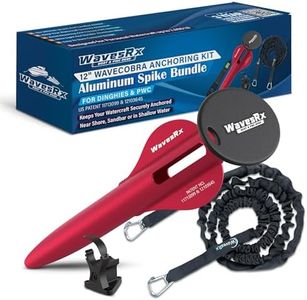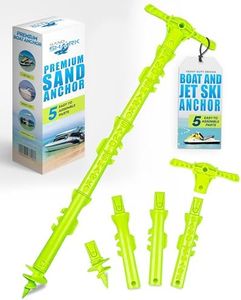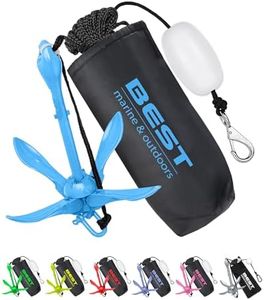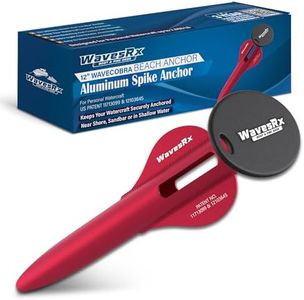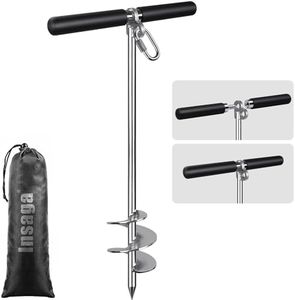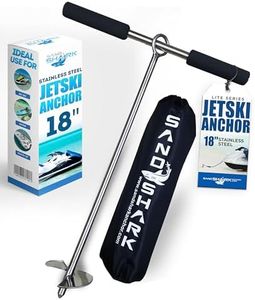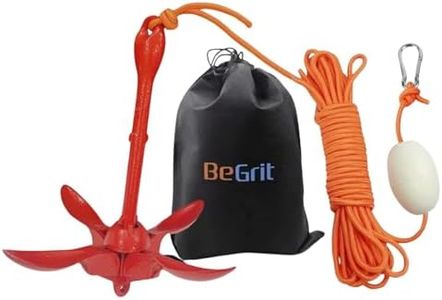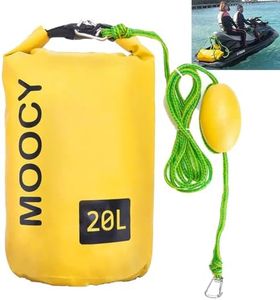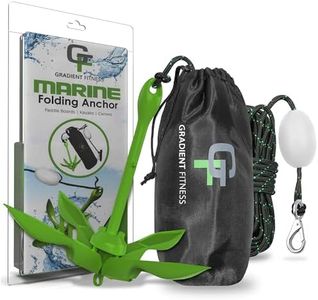We Use CookiesWe use cookies to enhance the security, performance,
functionality and for analytical and promotional activities. By continuing to browse this site you
are agreeing to our privacy policy
10 Best Jet Ski Anchors
From leading brands and best sellers available on the web.Buying Guide for the Best Jet Ski Anchors
Choosing the right anchor for your jet ski is essential for keeping your watercraft secure while you're stopped on the water or at the shore. Picking the right one depends a lot on where and how you'll be anchoring—like sandy, rocky, or muddy spots. Understanding what makes an anchor suitable for your needs can help you avoid losing your jet ski, struggling to retrieve your anchor, or damaging the seabed.Anchor TypeThe anchor type refers to the general design, which affects how it holds on different surfaces. Common types include fluke/danforth, grapnel, and mushroom anchors. Fluke anchors work well in sand and mud, grapnel anchors are good for rocky bottoms, and mushroom anchors are best for very soft ground. Your choice should be guided by the environment where you'll anchor most often. Consider a versatile design if you visit many different types of waterways.
WeightAnchor weight refers to how heavy the anchor is, and it needs to be heavy enough to hold your jet ski in wind or currents, but light enough for you to handle. Lighter anchors (around 1.5-3.5 pounds) are easy to manage and usually enough for a single jet ski in calm, sheltered areas. Go for a heavier one (4-8 pounds) if you often anchor in rough waters or faster currents. Consider your own strength and how easily you'll want to carry or deploy the anchor.
MaterialAnchor material impacts both performance and durability. Stainless steel anchors resist corrosion from saltwater but are more expensive, while galvanized steel anchors are durable and more budget-friendly though they may rust over time. There are also plastic or coated anchors designed to protect your jet ski’s finish. Choose a material that matches the environment you ride in most—freshwater, saltwater, or both—and how tough you are on gear.
Holding PowerHolding power is the anchor's ability to keep your jet ski from drifting, which depends on the anchor type, bottom conditions, and anchor size. Some anchors are rated by their holding power in pounds. For average conditions, a holding power rating matching or exceeding your jet ski’s weight is usually enough. If you often anchor in areas with strong wind or currents, look for anchors with higher holding power ratings.
Rope/Line Length and TypeThe length and type of anchor rope or line are important for effective anchoring. The line should be at least 5-7 times the depth of water where you’ll anchor, so you'll have enough 'scope' for the anchor to dig in and hold. Nylon rope is common because it stretches and absorbs shock, while braided lines are tangle-resistant. Choose a length and type based on where you mostly anchor and how much convenience or security you want when setting and retrieving your anchor.
Storage and PortabilityStorage and portability matter because jet skis have limited space. Some anchors are compact and foldable, making them easy to stow in your jet ski’s storage compartment. If you value a clutter-free ride or don’t have much space, look for collapsible or bagged anchor designs. Consider how easy it is to pack away, carry, and deploy the anchor when shopping.

